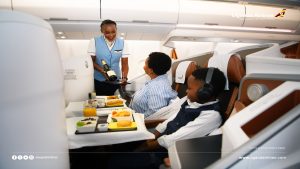Share
The purchase of 60 new ambulances, which will be dispersed among district hospitals across the country, has been announced by the Ministry of Finance. Henry Musasizi, State Minister of Finance, revealed this information to believers at All Saints Church in Nyamweru Subcounty, Rubanda District.

The allotted ambulances are intended to enhance patient transportation, particularly for those who require referral services, and boost systemwide effectiveness. In his speech, Minister Musasizi stressed the importance of these new ambulances in addressing community needs.
The Rubanda District will receive one of the ambulances. This choice was made in reaction to the district’s recent decision to designate Muko Health Centre IV as a hospital, which will result in the opening of the region’s first general hospital.
Ambulances are still needed in the community, especially during election seasons, Minister Musasizi noted. In order to adequately serve the neighborhood, he promised the crowd, one of the recently acquired ambulances would be stationed at the Rubanda District Hospital.
The Ministry of Health’s spokesperson, Emmanuel Ainebyona, acknowledged the development and revealed that the provider had already delivered 32 ambulances. He directed more questions to Dr. John Nabohe, the Ministry of Health’s Commissioner of Emergency Medical Services.
Dr. Nabohe referred a question regarding the ambulances’ budget to Minister Dr. Jane Ruth Aceng. Further information on the budget was unavailable at the time of publishing, though, due to the lack of her contact information. Dr. Nabohe did let our reporter know that bids had been made and that the Ministry of Finance had committed to set aside money each year for the purchase of at least 100 ambulances.
Dr. Nabohe also brought attention to the country’s present ambulance shortage, noting that there are currently 146 Type B and C ambulances on the road. However, the nation needs 460 ambulances in total to ensure universal coverage and eliminate avoidable fatalities caused by gaps in emergency services.
One Type B ambulance must be available for every 100,000 people, and one Type C ambulance for every two million, according to a plan created by the Ministry of Health. Suction machines, monitors, cardio-pulmonary support equipment, and other crucial medical devices are all included in Type B ambulances’ equipment lists. Contrarily, Type C ambulances are intensive care unit ambulances with cutting-edge life support technology.
It is crucial to be aware that Type A ambulances, which are essentially patient carriers without any medical equipment, are being phased out over time in order to give more attention to more sophisticated medical care during transportation.
The purchase of these 60 brand-new ambulances is an important step in closing the emergency services gap and providing better healthcare accessible across the nation. The Ministry of Health strives to effectively reduce avoidable deaths by increasing emergency response capabilities and allocating funds for the procurement of additional ambulances each year.











